Last Updated on Oct 31, 2025 @ 10:11:33 AM.
Not long ago, I had the opportunity to talk to the owner and creator of CodeRadGames, the developer behind the upcoming project Rogue Blight, regarding said game. During this interview, we talked about a few different aspects of the upcoming game, which ranged from the unique gameplay loop that players will experience all the way to the design of the numerous enemies, bosses, and NPCs that the player will meet on their journey.
For those who are not aware, Rogue Blight is an upcoming project from the developer CodeRadGames in which the player takes control of a mysterious character that is tasked with fighting through numerous rogue-lite levels, choosing from rewards, enemies, and even bosses as they acquire unique weapons and improve their character after each run, whether they be successful or not.
| EDITOR’S NOTE |
|---|
| Due to this being a written interview, some answers have been edited for clarity/brevity, without removing intent or context. |
First of All, Can You Please Tell Us Your Name and Your Role Within the Development of Rogue Blight?
Hello, I’m Konrad, but I go by CodeRad online. I’m the developer behind Rogue Blight and the owner of CodeRadGames. I have done most things in this game, such as programming, animations, game design, story, and more. I’ve been working on it for a little over five years now, and it’s really become my passion project.
The team for Rogue Blight is:
- Konrad (CodeRad) – Game Owner and Developer
- Adam Greenlee – Sound Effects/Music and Business Partner
- Dane Celestia – Artist (Contractor)
- Jason Quaid – Monster and Character Voice Overs (Contractor)
Throughout development, I’ve also worked with a number of other people who made smaller contributions to the project.
Rogue Blight Is a Mix of Different Gameplay Genres, From Side Scroller to Soulslike and Even Rogue-Lite. What Made You/Inspired You to Decide on These Different Genres?
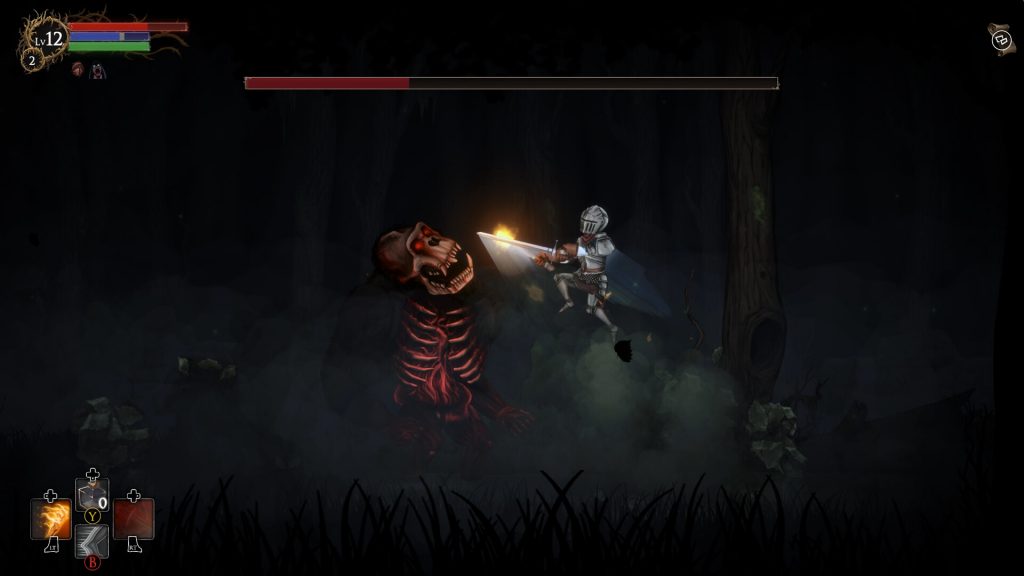
I’m a huge fan of Souls-like games, especially Dark Souls 3. It’s my favorite game of all time. The goal from the start was to make a 2D Souls-like with a focus on combat. I thought if I concentrated on just that, I could make the combat feel really high quality while keeping the project’s scope manageable.
Once I had a rough version of combat implemented, I decided to wrap it around a Slay the Spire-style map with upgrades. I thought it would be small in scope, too; turns out I was very wrong! Making a rogue-lite with all its systems ended up being incredibly challenging and time-consuming. But honestly, I couldn’t be happier with how it turned out.
What Led You to Create Rogue Blight in the First Place?
The simple answer is COVID-19. I started working from home during lockdown and suddenly had a lot more free time, so I decided to finally pursue my passion for game development. It’s been over five years since then. That might sound like a long time, but I’ve only been working on the game part-time since I also work full-time as a software engineer.
Due to the Game Being a 2D Side Scroller, How Did You Handle the Challenge of Making the Game Feel Full and Alive Without Going Too Far and Adding Too Much Into the Background?
There’s not one single thing that makes the game feel alive; it’s a lot of small things that add up. From bigger things like gear affecting how players look, different sounds playing based on gear types, NPCs and enemies responding to players’ actions, or just small footstep particle effects. All these details together (hopefully) create an immersive experience for the player.
There Are Plenty of Enemies Within Rogue Blight. What Led You Choosing These Enemies and the Style You Have Chosen to Put Them In?
This will sound very simple, but most enemies were added because I thought they’d make for a cool fight or had an interesting gimmick. Recently, I added a giant dragon to the game, and it reminded me that you don’t always need a wildly original design to make something fun. Dragons are just cool, especially giant ones!
As We Can See from the Trailer, There Are Numerous Enemies That the Player Will Come up Against. Did You Manage to Include All the Enemies You Wanted Within the Game, or Did Some End Up on the Cutting Room Floor?
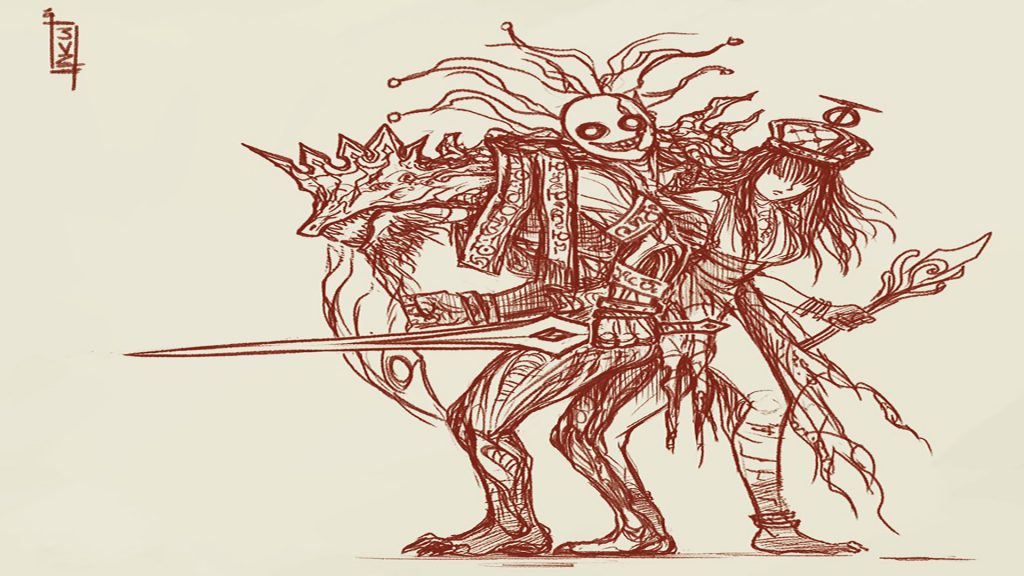
None of the enemies were fully cut, but part of one was. There was a boss I wanted to have with three different heads: King, Jester, and Queen. Once I started designing its moves, it quickly became clear that having three heads made the fight too confusing, so I simplified it and removed the Jester head. Here’s a sketch of how it originally looked!
From What We Can See, the Rogue-Lite Gameplay Within Rogue Blight Is Very In-Depth, With Numerous Paths and Options for the Player to Take. Did You Come Across Any Challenges Creating a Balance Between Combat, Rewards, and Other Options?
Balancing has been a huge part of development. The game’s been playtested for about three years now, and people still find absurd builds that are a bit too powerful. My approach to balancing is that if a broken build isn’t easy to recreate consistently, I don’t nerf it. Finding and creating those wild, overpowered builds is part of what makes rogue-likes fun.
Within the Game, Players Are Encouraged to Keep Fighting as They Win and Lose Within Each Run of Rogue Blight, Leading to Upgrades That Can Help Them in the Future. How Were You Able to Create This System, and Were There Any Issues in Making It Both Fair and Fun?
I think an upgrade system is a great way to keep players motivated, since they always feel like they’re progressing. It’s still possible to beat the game without upgrades. If it wasn’t, I think players would feel cheated.
On top of upgrades, there are player levels gained by defeating enemies. Leveling up expands the loot pool and unlocks new cosmetic gear that can be equipped at the start of a run. It adds another layer of complexity as the player gets used to the mechanics.
During the Trailer, We Can See Players Will Be Able to Meet NPCs During Their Numerous Runs Within Rogue Blight, and They Each Have Unique Designs and Uses Within the Game. What Led You to Choose These Unique Designs for These NPCs?
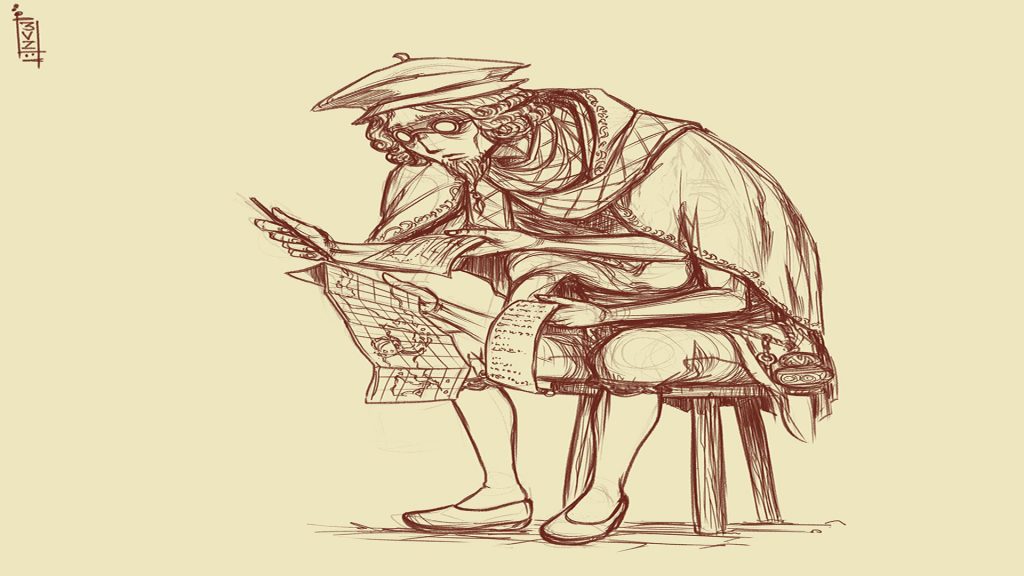
The process usually starts with me coming up with a rough concept for an NPC, and then Dane, our artist, brings it to life through his art. I try not to include too many details; it gives Dane room to be creative. Here’s one of the NPCs he sketched based on my simple description, “A cartographer who draws maps with four arms.”
Rogue Blight Is Full of Weapons That the Player Can Acquire Throughout Their Run, so Can You Tell Us How You Came About Making These Different Weapons and Making Sure You Didn’t Have Too Many That Acted the Same?
The game has quite a few weapons. Right now, the game has four weapon types: swords, wands, daggers, and shields. There are around ten status effects that these weapons can apply to enemies. For example, Fire Sword does the burn status effect, and Lightning Dagger does the Shock status effect. Then, on top of that, the majority of weapons have unique skills. There are over 50 weapons in the game right now.
Each weapon is one-handed, and players can wear 2 weapons at a time, like you can wear a sword and a wand together. Mixing and matching weapons encourages creative builds. All these things together create quite a few possible builds!
Magic Is Also Available for Players to Use Within Their Runs. Was There a Challenge in Making Sure That Magic Wasn’t the Sole Resort of Players?
I am a huge Dark Souls enjoyer, and magic in those games is quite famously overpowered. I think that this is by design to give players an easier option to progress through the game.
In Rogue Blight, I tried to keep wands balanced with other weapons. They deal less damage with normal attacks but have much better range. Their skills hit much harder but consume more mana, which forces players to build around mana at the cost of health. Since the arenas are quite small, mages still need to dodge and stay alert.
The Bosses in Rogue Blight Look as Gruesome as They Are Deadly. Is There Anything You Can Tell Us About How These Creatures Came to Be?
I would love to go into more details with the enemy creation process, as I think this might be useful for some of the readers. I will try to keep it short, but here are the steps of most of the enemy creation process.
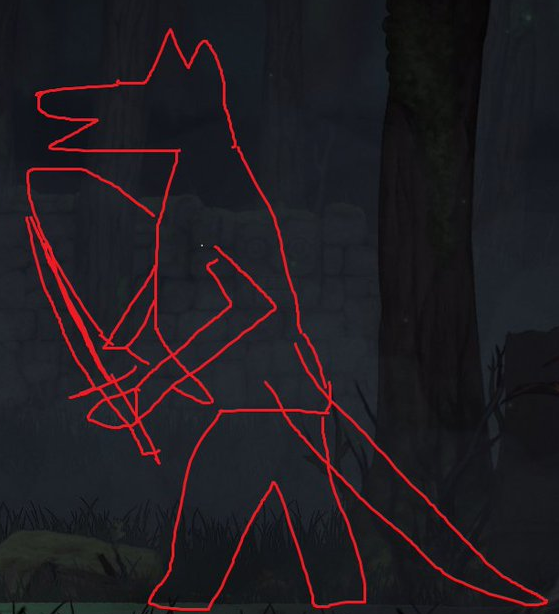
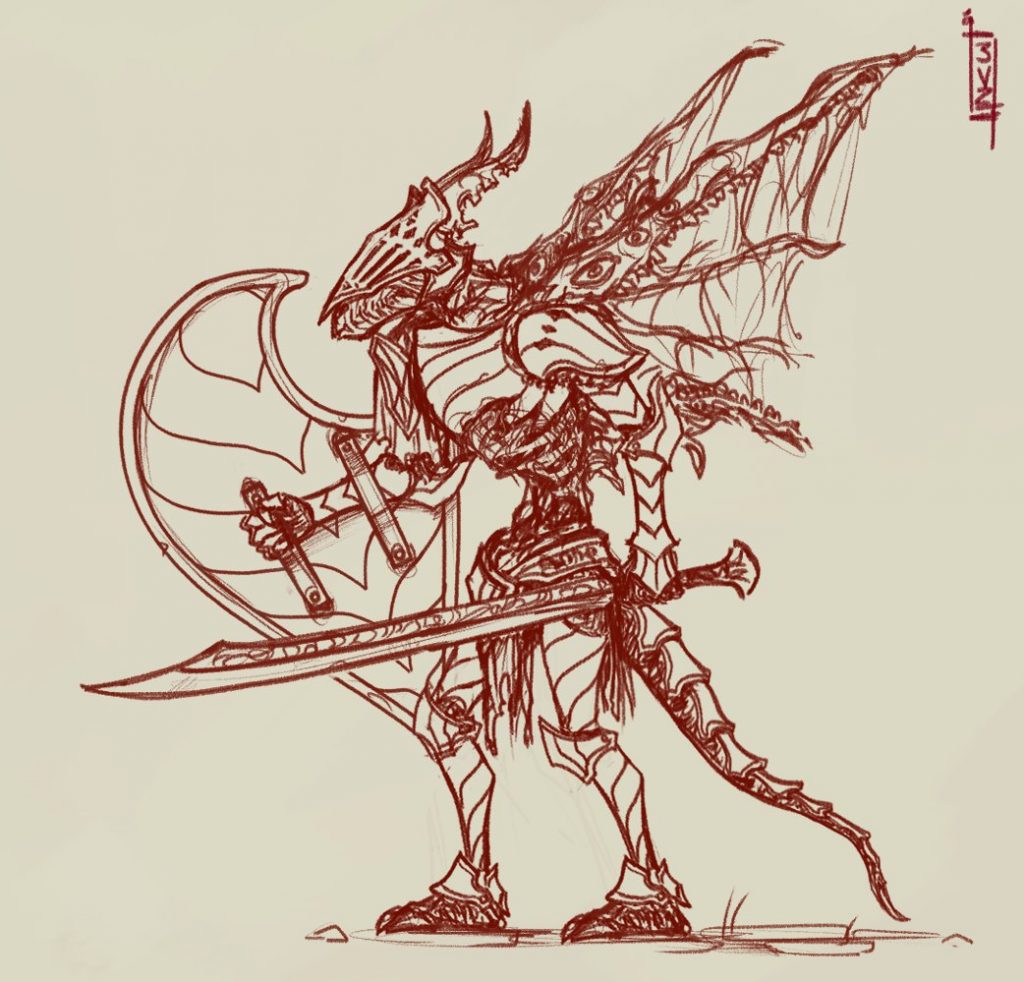
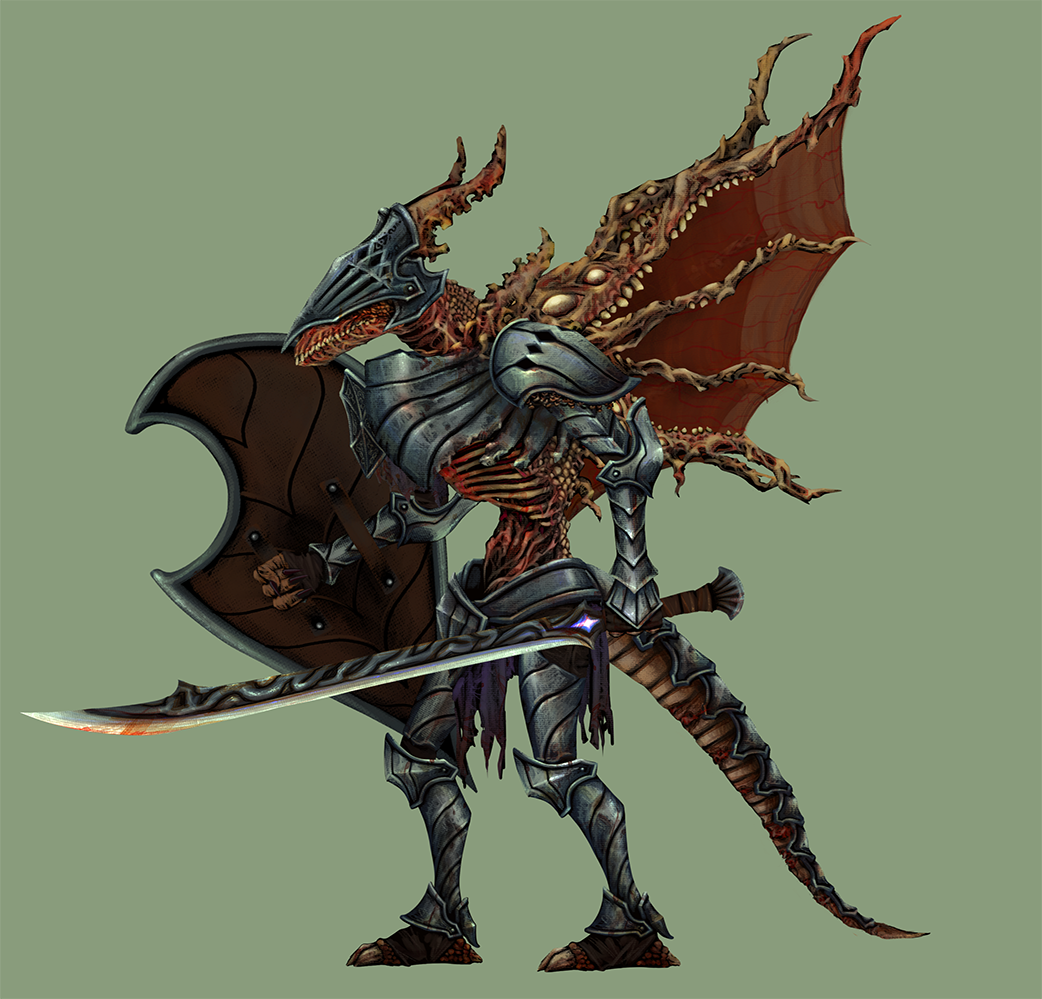
- Come up with an idea and a gimmick for the fight. Send an artist’s detailed description and rough sketch of the boss. I do let artists add a lot of their own flair to the drawings. Example idea: “Undead humanoid dragon with wings, wielding a lightning sword and shield.” Gimmick: “Summons lightning walls and electrifies the floor.”
- The artist sends me their sketch back based on the details provided; I give feedback if needed.
- Once the sketch is approved, the artist sends me a layered version. Layering is extremely important for being able to animate an enemy later.
- Finally, the artist sends me an image that is ready for rigging and animating.
That process repeats for every major enemy and boss.
One Question We Like to Ask Developers Is, Is There Any Misconception That People Have About What You Do as a Developer That Annoys You?
I get so many great suggestions for the game, and I’d love to add them all, but at some point, I have to finish the game. Every new feature means something else might not get made, maybe something more important. If I see a pattern in requests, I usually end up adding it. But people often underestimate how long it takes to implement things, and that adding one feature usually means cutting another.
With This Being Your Debut Title as Coderadgames, Were There Any Issues You Came Across in Generating Buzz for the Game as Well as Getting It Ready to Release to the Masses?
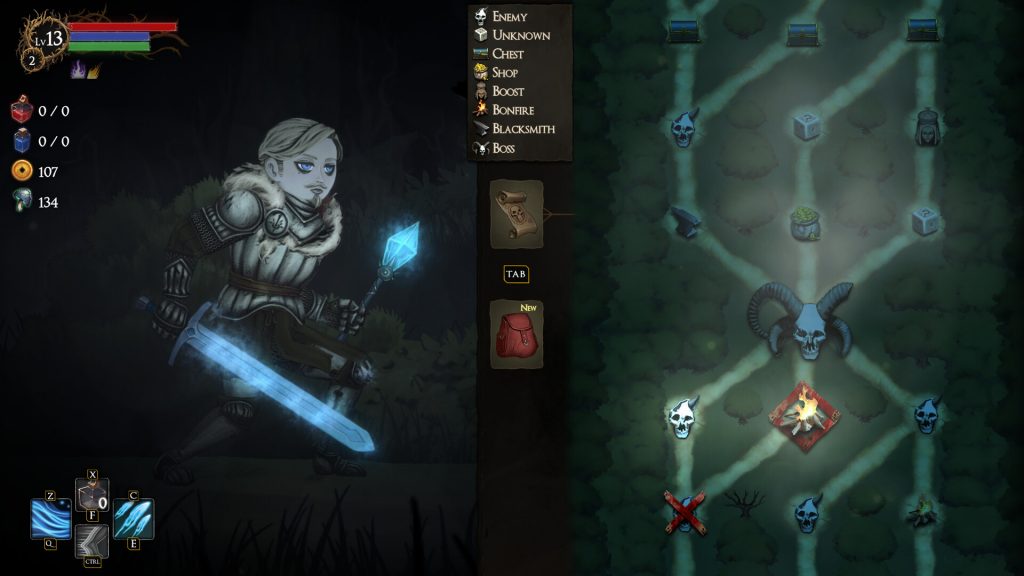
Honestly, I feel like I have been quite lucky in this regard. Generating buzz around the game was incredibly tough at the beginning of the project. But two big things helped a lot. The first was appearing on OTK’s Pixel Pitch Episode 2, where I won $5,000. That had a huge impact on both visibility and funding for the game’s art. It was honestly a once-in-a-lifetime experience, and I couldn’t be more grateful for this.
The second was releasing the Rogue Blight demo on Steam. A lot of YouTubers and streamers played it, which massively helped with wishlists. Additionally, the feedback from the demo release was extremely valuable.
At the Moment, Rogue Blight Doesn’t Have a Set Release Yet, but It Does Have a Demo Out for Players to Try. How Has This Process Helped You in Terms of Development?
I decided to release a demo quite early in development to gather feedback from players. I’ve since watched over 200 streamers and YouTubers play the game, and while many of the common issues they encountered have now been fixed in the full version, two major things stood out and led to big changes.
The first was the number of bosses. Before the demo, I had planned for 7 bosses in total, but after watching players engage with the content, I realised the game needed a lot more. The full version now has plans for 17 bosses.
The second change was the addition of more legendary item drops. There were only a few in the demo, and originally I intended to just have a handful in the full game. But seeing players’ reactions when they discovered those items made it clear that I needed to add many more. Now that legendary items are part of the private playtest, I can confidently say it was absolutely the right decision.
The downside of these changes is that the game will take a bit longer to finish than originally planned, but I believe these decisions are ultimately for the best, for both the game and its players.
What Are You Offering That Makes You Stand Out Compared to Other Rogue-Lite Games, Big and Small?
The main focus of Rogue Blight is on one-on-one combat, something that’s actually quite rare in the genre. You mostly fight single enemies, but they’re detailed, with complex moves and AI. Even basic enemies can feel like mini-bosses. On top of that, there’s a huge variety of builds and pretty much infinite New Game+, allowing for a lot of replayability.
As a Small Developer Yourself, Is There Any Advice You Can Give Up-And-Coming Developers Like Yourself That May Help Them Pursue Their Goals?
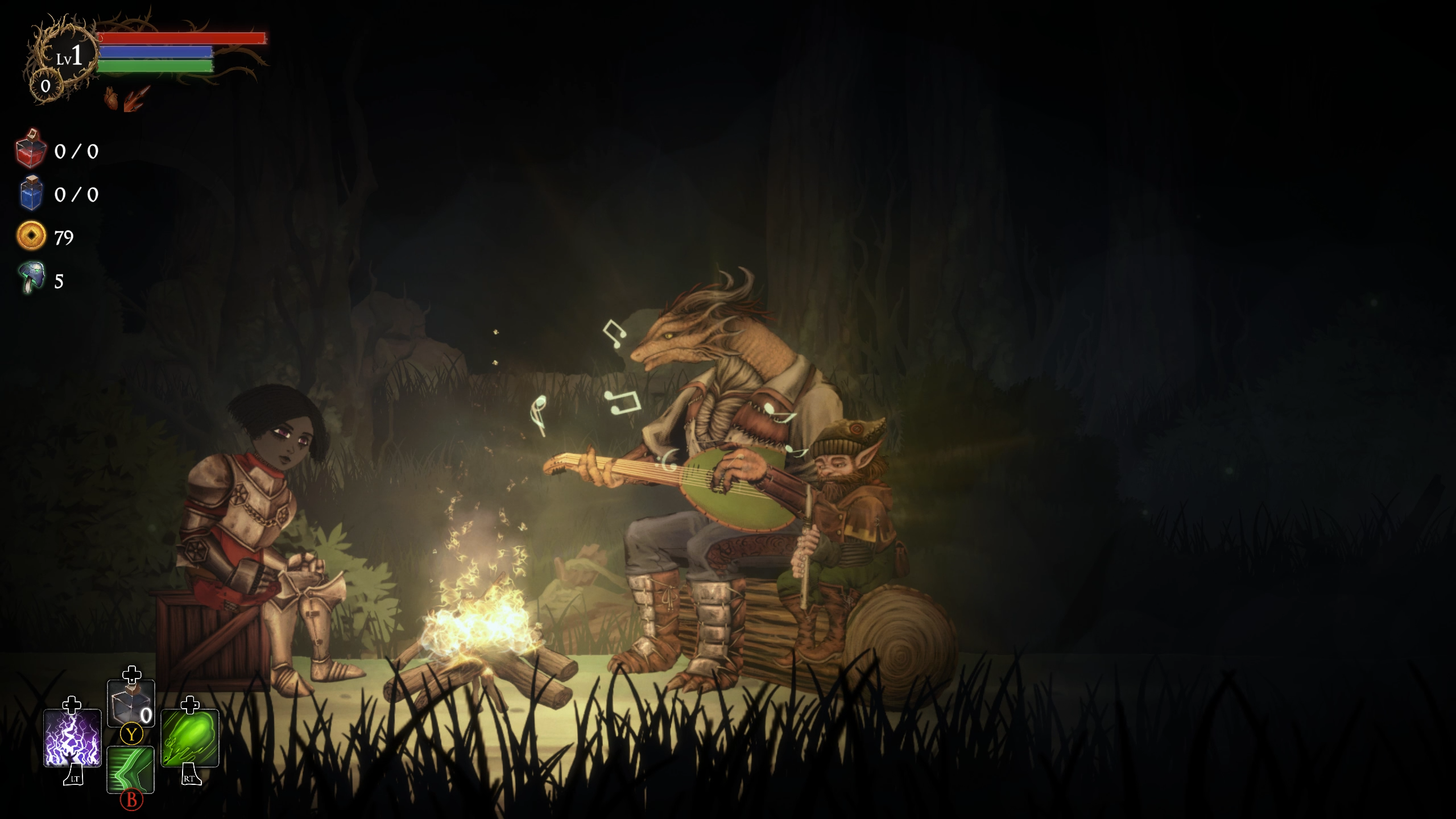
There’s a lot I could say. Developing Rogue Blight over the past five years has taught me a ton, and I still feel like I’m learning.
Everyone says to keep your project small and make something you enjoy; that’s true, but something people don’t talk about enough is playtesting early. Don’t wait years before showing your game to anyone. Upload a prototype to itch.io, or show it to your friends and family. Early feedback can save you so much time and help you make smarter design decisions
Is There Anything I Have Missed That You Would Like Our Readers to Know About Your Upcoming Game, Rogue Blight?
I’m aiming to release Rogue Blight in 2026. You can wishlist it on Steam to get updates and be notified when it launches. Thanks so much for reading. I hope this interview was interesting for anyone curious about Rogue Blight or getting into game development themselves!
For more Thumb Wars Gaming coverage, check out our hands-on preview for the upcoming game Beneath, or check out what the Director behind Clair Obscur: Expedition 33 says about award shows and his pick for Game of the Year.
Liam is a Senior Editor, Writer, and Critic for Thumb Wars and has been working with the team since day one. Liam is a big fan of all things gaming, as you will catch him playing all of the new releases from every genre you can imagine. Whether you find Liam gaming just for fun or spending his free time streaming, you will always find a smile on his face when it comes to all things gaming.

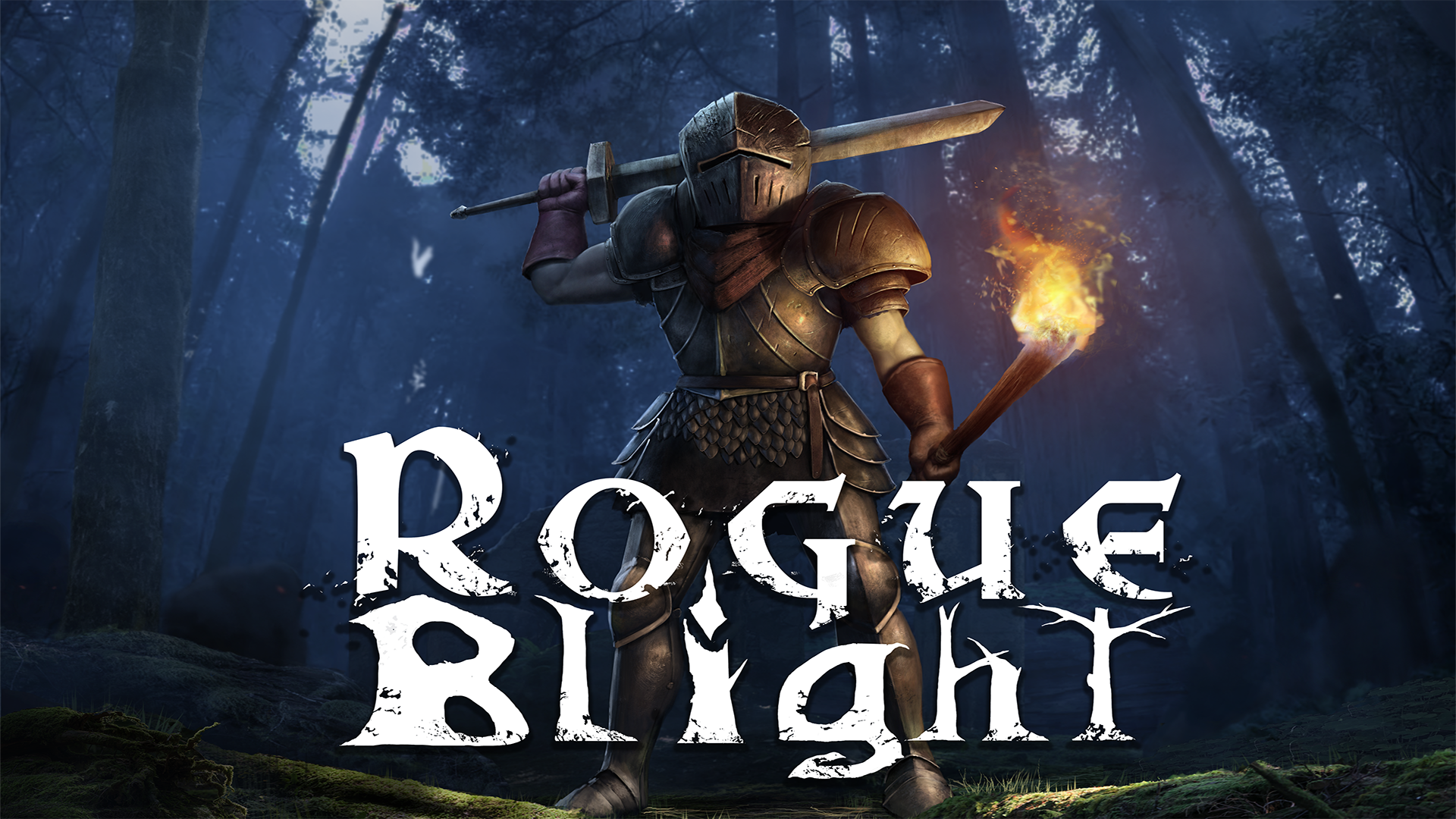

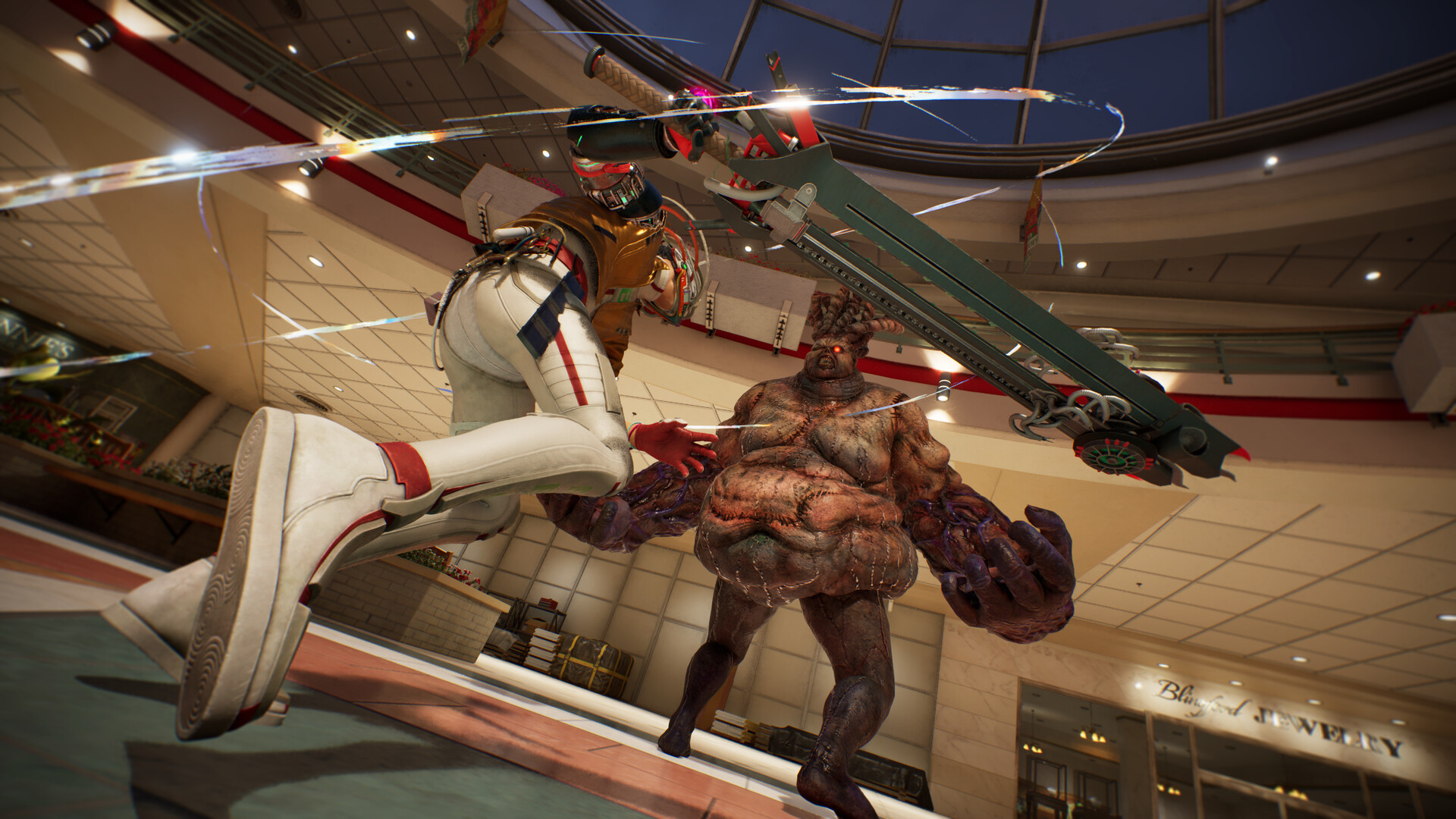
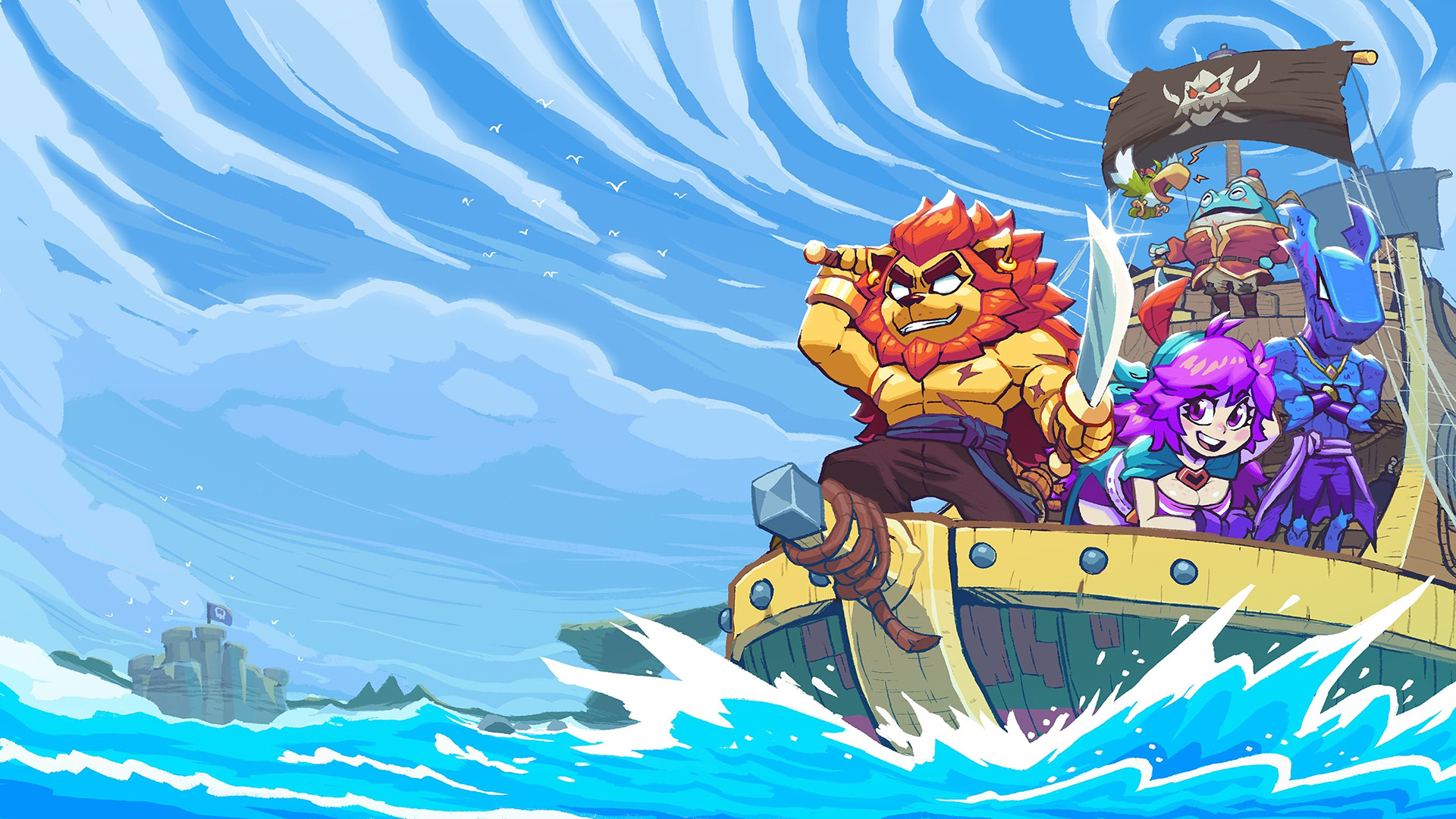
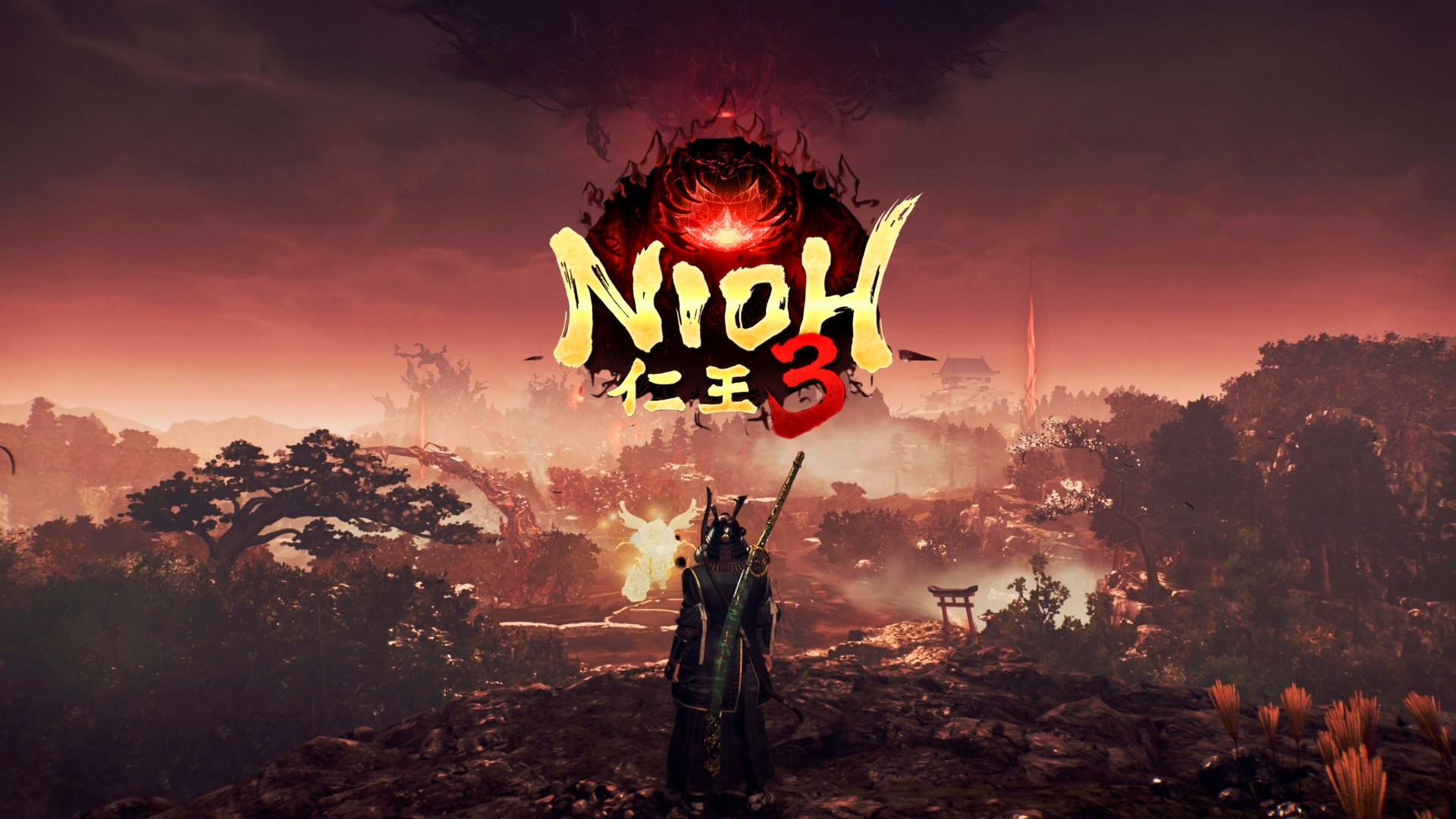
Really interesting read, very keen to play Rogueblight once it releases, downloaded the Demo and had a ton of fun!